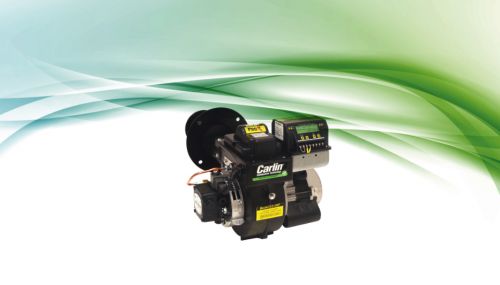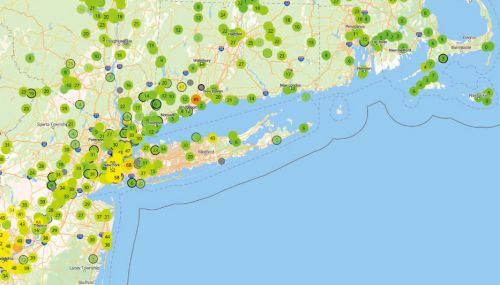Despite the relatively lower cost of heating a home today compared to the early ’80s, homeowners are still very interested in energy efficiency. We have boilers and furnaces capable of pushing 95 percent efficiency rates and considerably higher insulation R values.
Add to this the ever-increasing awareness of indoor air quality, and we have an excellent selling opportunity for both new construction and the retrofit market.
Today’s homes are built to promote energy efficiency. We can’t live without air, and lots of it—clean fresh air full of life-giving oxygen. Yet homes built today are constructed to keep fresh air out, all in the name of energy efficiency.
This “air-tight” construction lowers the heating bills, but it also restricts the flow of fresh air into the house. The EPA estimates the number of pollutants found in indoor air to be as much as 70 times greater than outdoors, even in urban areas.
An increase in the levels of pollen, dust, insect dander, tobacco smoke and other pollutants has been blamed for a doubling of the incidence of asthma and allergies in children and adults over the past 15 years. In examining the elements of a good ventilation system, it is easy to see why a heat recovery ventilator (HRV) is the preferred choice.
A good home ventilation system should:
- Get rid of excess moisture as well as odors and pollutants.
- Operate independently of outdoor weather conditions.
- Provide airflow throughout the house.
- Be fully and easily controllable.
- Provide a balanced flow of air into and out of the house.
- Be simple to maintain.
- Be quiet.
HRVs do all these things very well, but more importantly, do them in a cost effective way. They can transfer up to 85 percent of the heat from the outgoing air stream to the incoming air stream, thus reducing the heat loss normally associated with makeup air. They also are typically installed in the basement, keeping noise transmission to a minimum.
Heat Recovery Ventilators provide benefits that are appealing to both the consumer and the builder and can increase your piece of the pie. Let’s look at what HRVs are all about; what they do; why they are needed; who is using them; and how you can make money installing them.
Air-to-Air Heat Exchange
An HRV is basically an air-to-air heat exchanger. It removes stale air from the home and replaces it with fresh air. The beauty of an HRV is in the exchange of heat between the two airstreams. The heat exchanger is specifically designed to prevent cross contamination of exhaust
and supply air, but still provide for efficient heat transfer to help reduce overall energy costs. By removing stale air from the problem spots such as kitchens and baths and introducing fresh, tempered air throughout, an HRV greatly enhances the livability of the home.
HRVs are an integral part of energy efficient home design. The popularity of HRVs has grown since the ’70s, when energy costs skyrocketed. The Vermont Energy Efficient Home program strongly recommends the use of an HRV in its guidelines for new home construction. Most builders of quality homes today will include an HRV in the mechanicals.
Proper installation of an HRV begins with proper design for the individual home. The unit should be sized to meet the exhaust air requirement and should be balanced with equal exhaust and supply air. For residential applications, the following levels are recommended:
EXHAUST AIR REQUIRED PER AREA
Kitchen: 60 CFM (Cubic Feet Per Minute)
Baths: 20 CFM each
Laundry: 20 CFM
FRESH AIR SUPPLY RECOMMENDED
Basement: 20 CFM
Kitchen: 10 CFM
Dining Room: 10 CFM
Family Room: 10 CFM
Living Room: 10 CFM
Master BR: 20 CFM
Bedrooms: 10 CFM each
Baths: 10 CFM each
Sizing Methods
By adding up the exhaust requirements, and then balancing the supply air to it, the contractor can select the correct-size HRV unit. This is called the room count method. It is important to match the design requirements of the job to the capacity of the unit. An HRV can be installed independently when the home is heated hydronically, or integrally with a forced hot air system.
Once the unit has been selected, it’s just a matter of sizing the ductwork to the individual rooms. There are many types of flexible ductwork available today, and they are ideal for this application. Installation skills required are similar to those used when installing a furnace, air conditioning system or central vacuum system.
Another way to size is the whole-house ventilation method. Using a whole-house ventilation rate of 0.3 ACH (Air Changes per Hour), the HRV cfm (cubic feet per minute) needed can be determined. The following are a couple of examples of this calculation.
CONDOMINIUM – 800 sq.ft.
800 sq ft X 8 ft ht. = 6,400 cu.ft
6,400 cu.ft ÷ 60 = 106 cfm
106 cfm X 0.3 ACH = 32 cfm
A unit capable of moving 32 cfm will be adequate for this condo.
TWO STORY HOUSE – 4,000 sq.ft
4,000 sq.ft. X 8 ft.ht. = 32,000 cu.ft.
32,000 cu.ft. ÷ 60 = 534 cfm
534 cfm X 0.3 ACH = 160 cfm
A unit capable of moving 160 cfm will be adequate for this building.
A Heat Recovery Ventilator will add between $2,500 and $5,000 to the cost of a new home. This additional cost is more than made up for in comfort and the peace of mind provided by knowing that the home is free of indoor pollutants.
Of equal importance to the installing contractor is the added profit dollars associated with the installation. When all the benefits associated with an HRV are presented properly, you will be surprised at how easy a sell it actually is.





